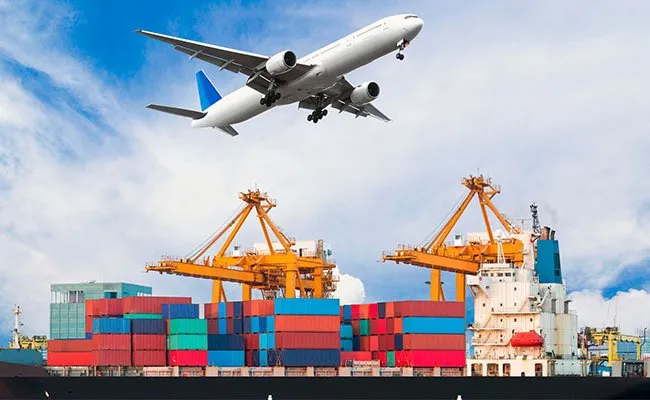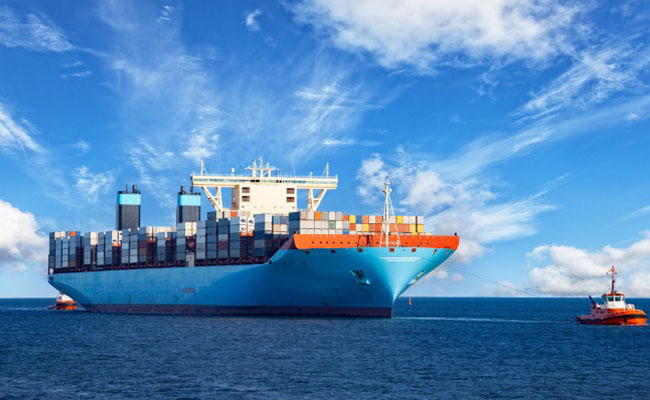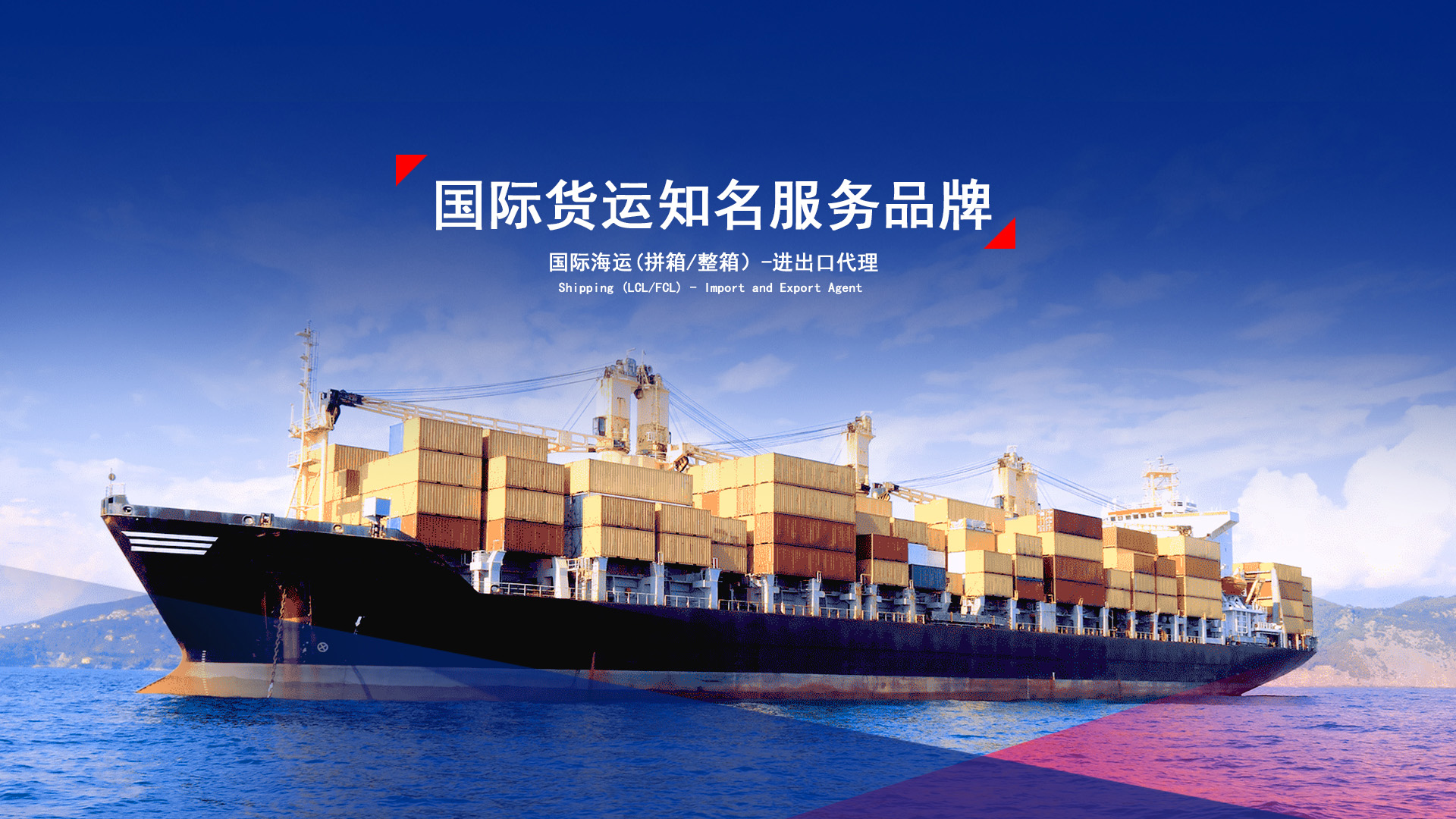In the era of globalized trade and e-commerce, understanding the shipping time from one country to another is crucial for businesses and individuals alike.One of the most vital trade routes lies between China and Australia, two economic powerhouses separated by the vast expanse of the Pacific Ocean. Sea freight is the lifeblood of this trade, facilitating the movement of goods ranging from electronics and textiles to raw materials and machinery.
If you’re looking to export from China to Australia for the first time or you’re seeking an easier way to move your goods, this page should be of interest.
You may also be interested in: Guide To Shipping A Car From China To Australia
How To Ship From China To Australia
Shipping from China to Australia is a common and cost-effective method of shipping goods between these two countries. Here are the key steps and information you need to know if you’re considering shipping goods via sea freight from China to Australia:
Container Type: Decide whether you want to use a Full Container Load (FCL) or a Less than Container Load (LCL) service. FCL means you rent an entire container, while LCL means your goods will share space with other shipments in the same container.
Book Your Shipment: Once you’ve chosen a freight forwarder or shipping line, you’ll need to book your shipment. Make sure you provide accurate information about the volume and weight of your cargo.
Customs Clearance: Ensure that you have all the necessary documentation for customs clearance in both China and Australia. This includes invoices, packing lists, and any required permits or licenses.
Container Packing: Properly pack and secure your goods in containers to prevent damage during transit. Make sure to comply with any regulations related to hazardous materials if applicable.
Inland Transportation: Arrange for the transportation of your goods to the departure port in China. This can be done by truck or rail, depending on the location of your supplier.
Port of Departure: Your goods will be loaded onto a ship at a Chinese port. Common departure ports in China for shipments to Australia include Shanghai, Shenzhen, and Qingdao.
Transit Time: The transit time can vary depending on factors like the shipping route, the carrier, and the specific ports involved. It typically takes around 15-25 days for a sea freight shipment to reach Australia from China.
Port of Arrival in Australia: The major ports in Australia where your shipment might arrive include Sydney, Melbourne, Brisbane, and Perth.
Customs Clearance in Australia: Prepare for customs clearance in Australia by having all necessary documentation in order. This includes providing accurate information about the goods, their value, and their intended use.
Delivery to Final Destination: After customs clearance in Australia, your goods can be transported to their final destination, which could be your warehouse or distribution center.
Import Duties and Taxes: Be aware of the import duties, taxes, and fees that may apply when your goods arrive in Australia. These will depend on the type of goods and their value.
Insurance: Consider purchasing shipping insurance to protect your goods in case of damage or loss during transit.
Regulations and Restrictions: Be aware of any specific regulations or restrictions that may apply to the type of goods you are shipping. Certain products may require additional permits or inspections.

How Long Does It Take To Ship From China To Australia?
Delivery timescales will no doubt influence your choice between ocean and air freight for your export from China to Australia. Air freight is quicker, with some shipments completed in just two days.
If you have a less pressing delivery deadline or your consignment is too big to fly, ocean freight is for you. You should allow between 12 and 62 days for your goods to be shipped by an ocean carrier from China to Australia.
Sea Freight Time From China To Australia
Sea Freight container time from China to Australia(Sydney, Melbourne, Brisbane)
| POL | POD | Transit time |
| Shanghai | Sydney | 17 days |
| Shanghai | Melbourne | 20 days |
| Shanghai | Brisbane | 18 days |
| Shenzhen | Sydney | 12 days |
| Shenzhen | Melbourne | 15 days |
| Shenzhen | Brisbane | 12 days |
| Qingdao | Sydney | 20 days |
| Qingdao | Melbourne | 22 days |
| Qingdao | Brisbane | 25 days |
As these sample shipping durations show, ocean carriers can get your goods from China to Australia in 12 to 30 days:
Guangzhou to Melbourne—24 days LCL
Guangzhou to Sydney—35 days FCL
Fuzhou to Melbourne—25 days LCL
Guangzhou to Brisbane—36 days FCL
Ningbo to Adelaide—29 days FCL
Ningbo to Brisbane—12 days LCL
Ningbo to Melbourne—23 days LCL
Ningbo to Sydney—22 days LCL
Qingdao to Fremantle—36 days FCL
Qingdao to Sydney—29 days FCL, 21 days LCL
Qingdao to Brisbane—21 days LCL
Shanghai to Brisbane—27 days FCL
Shanghai to Fremantle—27 days LCL
Shanghai to Melbourne—28 days FCL, 23 days LCL
Shanghai to Sydney—27 days FCL, 19 days LCL
Shekou to Melbourne—25 days FCL
Shenzhen to Brisbane—19 days LCL
Shenzhen to Sydney—21 days LCL
Tianjin to Sydney—31 days FCL, 26 days LCL
Wuhan to Sydney—36 days FCL
Xiamen to Sydney—36 days FCL
Zhongshan to Melbourne—24 days LCL
Huangpu to Adelaide—62 days LCL
Huangpu to Brisbane—24 days LCL
Huangpu to Sydney—24 days FCL, 27 days LCL
Nansha to Melbourne—28 days LCL
Nansha to Sydney—16 days FCL, 25 days LCL
Zhongshan to Melbourne—24 days LCL
Huangpu to Melbourne—27 days FCL
Shipping Cost From China To Australia
The shipping cost from China to Australia can vary widely depending on several factors. These factors include the type of cargo, the shipping method (FCL or LCL), the shipping route, the departure and arrival ports, the shipping company or freight forwarder chosen, and the current market conditions. Here are some key considerations that can affect the cost of Sea Freight from China to Australia shipping:
Cargo Type and Volume: The type of goods you are shipping and the volume (size and weight) of your cargo will significantly impact the cost. Bulk commodities may have different pricing structures than standard consumer goods.
Container Type: If you opt for Full Container Load (FCL), you will pay for the entire container, while Less than Container Load (LCL) shipments involve sharing a container with other shipments, which can be cost-effective for smaller volumes.
| Container shipping service to Australia | Type of container | Ocean freight rates to Australia: |
|---|---|---|
| How much does it cost to ship a container from Shanghai to Australia | 20 foot container FCL 40 foot container FCL | average prices from: $850 20FT average prices from: $1550 40FT |
| How much does it cost to ship a container from Qingdao to Australia | 20 foot container FCL 40 foot container FCL | average prices from: $850 20FT average prices from: $1550 40FT |
| How much does it cost to ship a container from Shenzhen to Australia | 20 foot container FCL 40 foot container FCL | average prices from: $850 20FT average prices from: $1550 40FT |
| How much does it cost to ship a container from Tianjin to Australia | 20 foot container FCL 40 foot container FCL | average prices from: $850 20FT average prices from: $1550 40FT |
| How much does it cost to ship a container from Ningbo to Australia | 20 foot container FCL 40 foot container FCL | average prices from: $850 20FT average prices from: $1550 40FT |
| How much does it cost to ship a container from Hong Kong to Australia | 20 foot container FCL 40 foot container FCL | average prices from: $850 20FT average prices from: $1550 40FT |
| How much does it cost to ship a container from Guangzhou to Australia | 20 foot container FCL 40 foot container FCL | average prices from: $850 20FT average prices from: $1550 40FT |
Shipping Route: The specific route your shipment takes can affect costs. The choice of routes can depend on factors like transit time, available carriers, and shipping rates. For example, a direct route may be more expensive but faster, while a less direct route might be more cost-effective but take longer.
Departure and Arrival Ports: Different ports in China and Australia may have varying handling charges and fees. Major ports like Shanghai, Shenzhen, Sydney, Melbourne, Brisbane, and Perth typically have more frequent sailings, which can impact pricing.
Market Conditions: Shipping rates can fluctuate due to supply and demand, fuel prices, and other market factors. The time of year can also influence rates, as peak seasons may result in higher prices.
Additional Charges: Be aware of potential additional charges, such as port handling fees, documentation fees, customs duties, and taxes. These can add to the overall shipping cost.
Insurance: If you choose to insure your cargo, the cost of insurance will be an additional expense. Insurance can provide valuable protection in case of damage, loss, or theft during transit.
Currency Exchange Rates: Currency exchange rates between the Chinese Yuan (CNY) and the Australian Dollar (AUD) can affect the overall cost, especially if you are paying for shipping in a currency other than your own.
Customs and Compliance: Costs related to customs clearance and compliance with import regulations in both China and Australia should be factored in. Failure to comply with customs requirements can result in additional fees and delays.

Factors Affecting The Time And Price Of Shipping From China To Australia
Shipping Method: The choice between air freight and sea freight is a primary determinant. Air freight is faster but more expensive, while sea freight is slower yet more economical for large volumes.
Volume and Weight of Goods: Larger and heavier shipments often require more time for handling and loading, and they also increase the cost due to the space and resources they consume.
Route and Transit Points: The specific shipping route and any intermediate transit points can impact both the duration and cost. Some routes may have more efficient infrastructure and fewer delays, while others might be subject to congestion or additional fees.
Season and Peak Periods: Shipping times and prices can vary depending on the season. Peak seasons, such as before major holidays or during certain months of high trade activity, may result in longer transit times and higher costs due to increased demand.
Customs Clearance: The efficiency of customs processes in both China and Australia can cause delays and add to the overall shipping time. Complex or incomplete documentation can further complicate customs clearance and potentially increase costs.
Nature of Goods: Certain types of goods, such as perishable items, hazardous materials, or goods requiring special handling or storage, may have specific regulations and procedures that can affect shipping time and cost.
Carrier and Logistics Provider: Different shipping carriers and logistics companies offer varying levels of service, reliability, and pricing. Their expertise and network can also influence the smoothness and speed of the shipment.
Economic and Political Conditions: Changes in trade policies, economic stability, or political relations between the two countries can have an impact on shipping costs and transit times.
Weather Conditions: Unfavorable weather, such as storms or typhoons, can disrupt shipping schedules and potentially lead to delays and additional costs.
Conclusion
In conclusion, the time it takes to ship from China to Australia can vary significantly depending on multiple factors. By understanding these factors, choosing the appropriate shipping method, preparing documentation carefully, and staying vigilant through tracking, you can better manage your expectations and ensure a successful shipping experience.
When estimating shipping times, it’s always a good idea to factor in some buffer time to account for potential delays. Additionally, maintaining open communication with your shipping provider and being proactive in addressing any issues that arise can go a long way in minimizing disruptions and ensuring the timely arrival of your goods.
Shipping from China to Australia, For an accurate estimate of shipping costs and times from China to Australia, it is recommended to contact Zoson Freight Forwarding directly.





